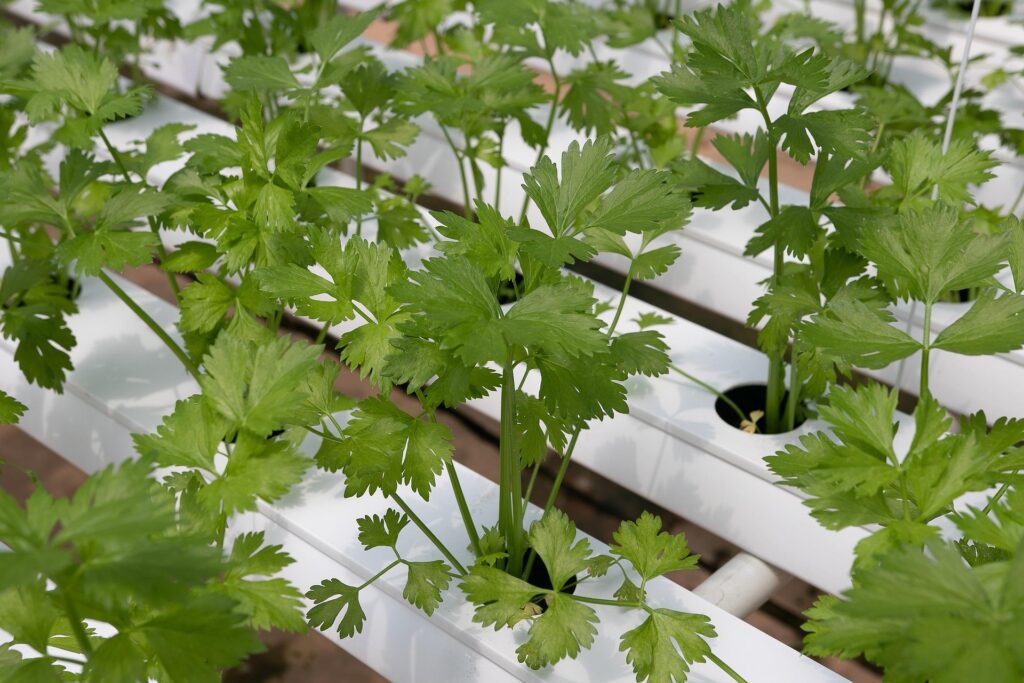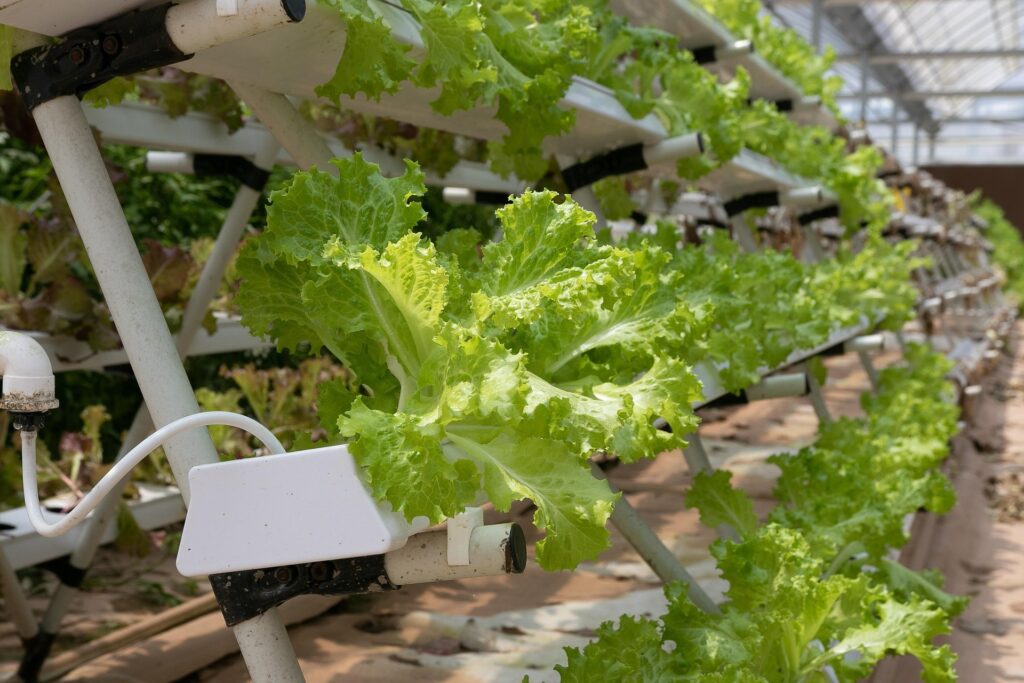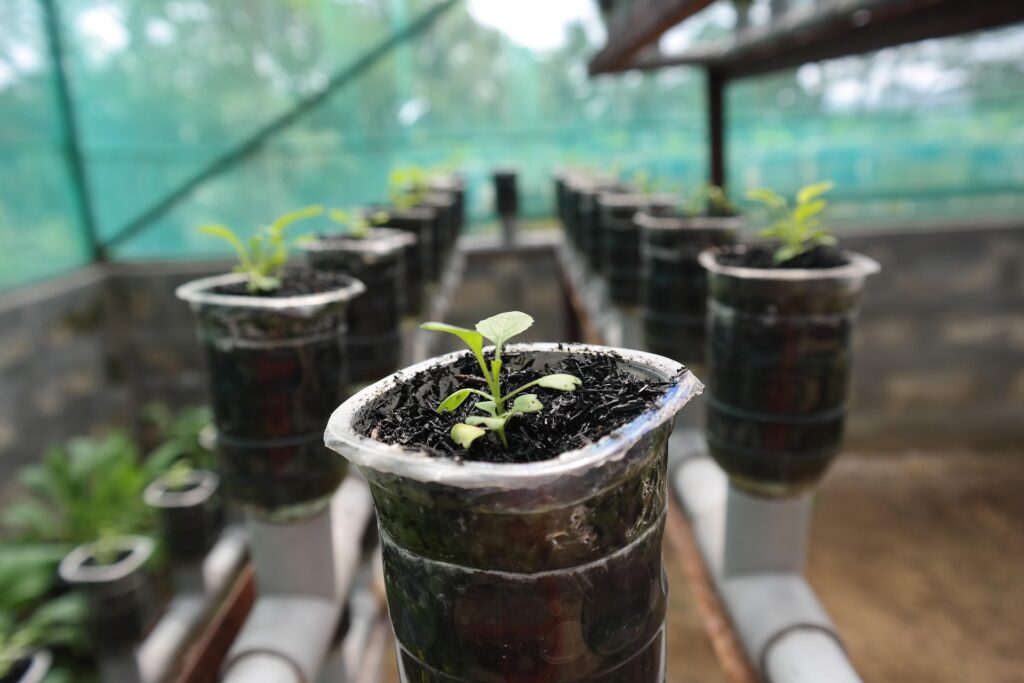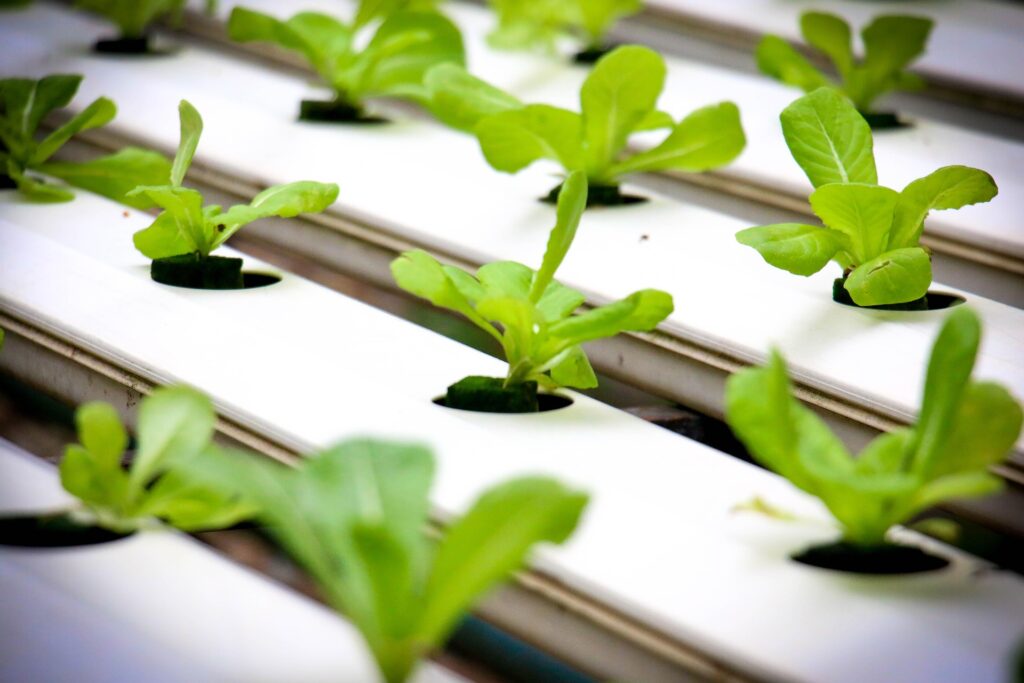Table of Contents
Introduction
Hydroponics Agriculture is facing unprecedented challenges, from climate change to water scarcity, which threaten global food security. Traditional farming methods often rely heavily on natural resources, leading to environmental degradation and inefficiencies. Hydroponics, a method of growing plants in nutrient-rich solutions rather than soil, offers a sustainable alternative. By leveraging hydroponics, farmers can improve productivity, reduce waste, and enhance their overall quality of life.
The importance of extends beyond mere efficiency; it also plays a crucial role in personal and professional success. By adopting hydroponic systems, farmers can achieve financial stability, improve their lifestyle, and build a strong professional reputation. Professionally, provides a competitive edge, enhances credibility, and offers opportunities for expansion.
In this article, we will explore the benefits of , discuss how it contributes to personal and professional success, and examine the challenges and future directions in this field.

Benefits
offers numerous advantages over traditional farming methods, making it an attractive option for modern farmers. Here are some of the most significant benefits:
Water Conservation
Agriculture is one of the largest consumers of water globally, accounting for approximately 70% of freshwater withdrawals. However, traditional farming practices often lead to significant water waste through evaporation, runoff, and inefficient irrigation systems. Water conservation in agriculture is vital for ensuring food security, reducing environmental degradation, and promoting sustainable farming practices.
Techniques for Water Conservation in Agriculture
Several innovative techniques are being implemented to conserve water in agriculture. Here are some of the most effective methods:
1. Drip Irrigation
Drip irrigation is one of the most efficient water conservation techniques in agriculture. It involves delivering water directly to the roots of plants through a network of tubes and emitters, minimizing evaporation and runoff. This method can reduce water usage by up to 60% compared to conventional flood irrigation134. Drip irrigation is particularly effective in vineyards, orchards, and row crops.
2. Rainwater Harvesting
Rainwater harvesting involves collecting and storing rainwater from fields, greenhouses, and rooftops for later use in irrigation. This technique reduces reliance on groundwater and surface water sources, especially in arid regions where water scarcity is a significant issue24. By capturing and storing rainwater, farmers can ensure a reliable water supply during dry periods.
3. Soil Moisture Monitoring
Soil moisture monitoring systems use sensors to provide real-time data on soil water content. This information allows farmers to optimize irrigation schedules, ensuring that crops receive the right amount of water at the right time. This precision reduces overwatering and underwatering, improving crop health and water efficiency13.
4. Mulching
Mulching involves covering the soil with organic or inorganic materials to reduce water loss through evaporation. Mulch also helps control soil temperature and suppress weed growth, further enhancing soil health and water retention14. This method is commonly used in row crops, orchards, and vegetable gardens.
5. Crop Rotation and Selection
Crop rotation and selecting drought-resistant crops are practical strategies for conserving water. Crop rotation improves soil structure and water retention, while drought-resistant crops require less water to thrive15. This approach is adaptable to different climates and crop varieties.
6. Precision Agriculture Technologies
Precision agriculture uses advanced technologies like GPS, remote sensing, and data analytics to optimize irrigation and fertilizer application. By targeting resources precisely, farmers can reduce waste and improve yields while conserving water13.
7. Conservation Tillage
Conservation tillage reduces soil disturbance, minimizing water evaporation and increasing soil water retention. This method preserves soil health and prevents erosion, making it beneficial for crops like wheat, corn, and soybeans15.
Benefits of Water Conservation in Agriculture
Implementing water conservation techniques in agriculture offers numerous benefits:
- Reduced Water Waste: Techniques like drip irrigation and soil moisture monitoring ensure that water is used efficiently, reducing waste and runoff.
- Improved Crop Health: Precise water application enhances crop health by preventing overwatering and underwatering.
- Environmental Sustainability: Water conservation reduces the environmental impact of agriculture by minimizing soil erosion and preserving water resources.
- Increased Resilience to Climate Change: Efficient water use helps farms adapt to climate variability, ensuring consistent yields despite changing weather patterns3.
Challenges and Future Directions
While water conservation techniques are effective, there are challenges to their adoption. High initial investment costs for systems like drip irrigation can be a barrier for small-scale farmers. However, the long-term benefits of increased efficiency and reduced costs can offset these expenses.
Future directions in water conservation will likely involve further integration with technology and sustainable practices. Innovations in precision agriculture and renewable energy will play a significant role in optimizing resource use and minimizing environmental impact. Additionally, promoting water-efficient crops and improving soil health through composting and mulching will continue to be crucial strategies.


Increased Yields
also offers the potential for significantly higher yields compared to traditional farming. By providing plants with precise amounts of nutrients and water, systems optimize growth conditions, leading to faster and healthier plant development. This precision ensures that crops reach their full potential, resulting in higher yields and better quality produce.
Space Efficiency
Space efficiency is one of the most significant advantages of hydroponics, making it an attractive option for farmers and urban gardeners alike. Here’s a detailed explanation of how hydroponics maximizes space:
Space Efficiency in Hydroponics
Hydroponics allows for the cultivation of crops in compact spaces, making it ideal for urban areas or regions with limited land availability. This space efficiency is achieved through several key factors:
Vertical Farming
- Layered Growing: Hydroponics can be integrated with vertical farming techniques, where plants are grown in layers. This method maximizes the use of vertical space, allowing for more crops to be grown in smaller areas compared to traditional horizontal farming methods45.
- Optimized Plant Arrangement: By controlling plant spacing and arrangement, hydroponic systems ensure that each plant receives adequate light and nutrients, optimizing growth conditions and reducing the space required for cultivation3.
Direct Nutrient Delivery
- Reduced Root System: In hydroponics, nutrients are delivered directly to the plant roots, eliminating the need for extensive root systems. This means plants can thrive in smaller spaces without the need for deep soil12.
- Increased Density: The controlled environment of hydroponics allows for higher plant density, enabling more crops to be grown per unit area compared to traditional farming methods4.
Urban and Limited Space Applications
- Urban Agriculture: Hydroponics is particularly beneficial in urban settings where space is limited. It allows for the creation of urban farms that can supply fresh produce locally, reducing reliance on distant agricultural regions26.
- Indoor Growing: With hydroponics, crops can be grown indoors using artificial lighting, making it possible to cultivate plants year-round regardless of outdoor weather conditions6.
Benefits of Space Efficiency
- Increased Productivity: By maximizing space, hydroponics enables higher yields per unit area, making it a more productive method than traditional farming7.
- Reduced Land Use: The ability to grow crops in smaller areas reduces the need for large tracts of land, preserving natural habitats and reducing environmental impact4.
- Cost Savings: Efficient use of space can lead to cost savings by reducing the need for land acquisition and preparation7.


Future Directions
Looking forward, advancements in hydroponic technology will likely focus on further optimizing space use through innovative vertical farming designs and precision agriculture techniques. By integrating hydroponics with renewable energy sources and advanced automation, the potential for sustainable and efficient food production will continue to grow.
Recommendations for Farmers
- Invest in Vertical Farming Systems: Consider integrating hydroponics with vertical farming to maximize space efficiency and increase yields.
- Optimize Plant Spacing: Ensure correct plant spacing to prevent disease and enhance growth conditions.
- Explore Urban Farming Opportunities: Leverage hydroponics to establish urban farms, providing fresh produce locally and contributing to sustainable agriculture.
Hydroponics contributes to a more sustainable agricultural practice by reducing soil erosion and minimizing the use of chemical pesticides and fertilizers. Since plants are grown in controlled environments, there is less need for these chemicals, which often pollute soil and water. Additionally, hydroponics eliminates the need for tilling, which can lead to soil compaction and erosion.
Personal Success
Personal success in hydroponics is closely tied to the numerous benefits this method offers, from increased financial stability to improved lifestyle quality. Here’s a detailed explanation of how hydroponics contributes to personal success:
Personal Success with Hydroponics
Increased Income
Hydroponics offers the potential for higher profits due to increased yields and reduced costs. By optimizing growth conditions and minimizing waste, hydroponic systems can produce more crops per unit area than traditional farming methods. This increased productivity leads to higher revenues, providing farmers with financial stability and the ability to invest in their operations or personal development.
Improved Lifestyle
The automation and precision technology in hydroponics reduce manual labor and physical strain. This means farmers can enjoy better health and more leisure time, allowing them to pursue hobbies or spend quality time with family. Additionally, the reduced workload enables farmers to focus on other aspects of their lives, such as education or personal development, enhancing their overall quality of life.
Reduced Physical Strain
Manual farming is physically demanding and can lead to health issues over time. By mechanizing farming tasks through hydroponics, farmers can reduce the physical strain associated with manual labor. This not only improves their health but also allows them to work longer hours without fatigue, leading to a better quality of life.
Predictability and Consistency
Hydroponics provides a predictable and consistent yield, unaffected by external factors like weather conditions. This predictability allows farmers to plan their finances and operations more effectively, reducing stress and uncertainty. With a steady income stream, farmers can enjoy financial security and peace of mind.
Year-Round Production
One of the significant advantages of hydroponics is its ability to produce crops year-round. This means farmers can maintain a consistent supply of fresh produce, regardless of the season. This continuous production cycle not only enhances financial stability but also allows farmers to enjoy a steady supply of fresh, healthy food for themselves and their families.
Enhanced Food Quality
Hydroponics allows for precise control over nutrient delivery, leading to healthier and more nutritious crops. By growing their own food hydroponically, farmers can ensure they have access to high-quality, organic produce year-round. This not only improves their diet but also enhances their overall well-being.
Personal Fulfillment
Engaging in hydroponics can be personally fulfilling, as it allows farmers to be self-sufficient and contribute to sustainable agriculture. The ability to grow food independently and efficiently can provide a sense of accomplishment and pride, contributing to personal satisfaction and happiness.
Future Directions
Looking forward, the future of hydroponics will likely involve further integration with technology and a focus on sustainability. Innovations like autonomous systems and renewable energy integration will play a significant role in optimizing resource use and minimizing environmental impact. Farmers who adapt to these changes will not only enhance their personal success but also contribute to a more sustainable agricultural sector.


Recommendations for Farmers
- Invest in Modern Hydroponic Systems: Consider upgrading to advanced hydroponic systems that incorporate precision farming technologies to improve efficiency and reduce waste.
- Stay Updated with Technological Advancements: Participate in workshops and training programs to stay informed about the latest trends in hydroponics and precision agriculture.
- Build a Strong Network: Engage with other farmers, suppliers, and buyers to build a strong professional network that can support your growth and expansion.
By increasing yields and reducing costs, hydroponics can lead to higher profits for farmers. The consistent production cycles of hydroponic systems ensure a steady income stream, providing financial stability and peace of mind. This financial security allows farmers to invest in their operations, expand their businesses, and improve their living standards.
Improved Lifestyle
The automation and precision technology in hydroponics reduce manual labor and physical strain. This means farmers can enjoy better health and more leisure time, allowing them to pursue hobbies or spend quality time with family. Additionally, the reduced workload enables farmers to focus on other aspects of their lives, such as education or personal development.
Reduced Physical Strain
Manual farming is physically demanding and can lead to health issues over time. By mechanizing farming tasks through hydroponics, farmers can reduce the physical strain associated with manual labor. This not only improves their health but also allows them to work longer hours without fatigue, leading to a better quality of life.
Professional Success
Hydroponics is also crucial for professional success in agriculture. Here are some ways in which it contributes to a farmer’s professional standing:
Competitive Advantage
Hydroponics provides a competitive edge by allowing farmers to produce high-quality crops consistently, regardless of weather conditions. This reliability is essential for building strong relationships with buyers and maintaining contracts. By delivering consistent quality, farmers can differentiate themselves in the market and attract premium prices for their produce.
Reputation and Credibility
The precision and reliability of hydroponic systems enhance a farmer’s professional reputation. When farmers consistently deliver high-quality produce on time, they build credibility with suppliers, buyers, and other stakeholders in the agricultural industry. A good reputation is essential for attracting new customers, securing contracts, and accessing financing opportunities.
Opportunities for Expansion
With increased productivity and efficiency, farmers have the opportunity to expand their operations. By leveraging hydroponics, farmers can manage larger areas more effectively, diversify their crops, and explore new markets. This expansion not only increases their income potential but also allows them to contribute more significantly to the local economy.
Challenges and Future Directions
While hydroponics offers numerous benefits, there are also challenges associated with its adoption. Here are some of the key challenges and future directions in this field:
Initial Investment Costs
One of the significant challenges with hydroponics is the high initial investment required to set up a system. The cost of equipment, such as grow lights, pumps, and nutrient solutions, can be prohibitive for small-scale farmers. However, the long-term benefits of increased yields and reduced costs can offset these initial expenses.


Technological Advancements
The future of hydroponics is closely tied to technological advancements. Innovations in automation, LED lighting, and data analytics are transforming the way hydroponic systems operate. For instance, AI-powered systems can optimize nutrient delivery and environmental conditions in real-time, further enhancing efficiency and yields.
Environmental Sustainability
As concern about climate change and environmental sustainability grows, hydroponics is positioned to play a critical role in sustainable agriculture. By reducing water usage, minimizing chemical inputs, and promoting efficient resource use, hydroponics contributes to a more environmentally friendly farming practice. Future developments in hydroponics will likely focus on integrating renewable energy sources and reducing waste, making it an even more sustainable option.
Conclusion
Hydroponics offers a promising path to personal and professional success in agriculture. By enhancing productivity, reducing environmental impact, and providing consistent income streams, hydroponics helps farmers achieve financial stability and improve their quality of life. Professionally, it provides a competitive edge, builds reputation, and offers opportunities for expansion.
As the agricultural sector continues to evolve, embracing hydroponics and addressing the challenges associated with its use will be essential for future success. By leveraging technological advancements and focusing on sustainability, farmers can ensure a prosperous and environmentally conscious future for themselves and their communities.
This comprehensive blog post explores the role of hydroponics in achieving personal and professional success, highlighting its benefits, challenges, and future directions. It provides insights into how hydroponics can contribute to sustainable and efficient farming practices, making it an indispensable tool for modern agriculture.
Outstanding perspective! Best Games offers incremental progress systems with automation upgrades. Best Games includes lightweight IO Games supporting global player competition. Discover the best games today!
Balancing risk and reward in games like FNAF 3 is key to survival. Just like in blackjack, every move counts. Check out FNAF 3 for a real heart-pounding challenge.
Loving the insights on virtual sports betting! It’s fascinating how platforms like JiliOK 777 use AI to enhance gameplay and strategy – definitely something to keep an eye on in the evolving iGaming scene.
Great breakdown! It’s clear how platforms like PH987 prioritize security and variety. The PH987 login app makes access smooth, and their live dealer games really enhance the experience. A fresh take on online gaming!
Great insights on casino strategies! It’s always smart to compare game odds and house edges before playing. For a top-tier gaming experience with slots and live dealers, check out JLJLPH Casino. Worth the play!
It’s fascinating how much psychology impacts our gaming habits! Seeing platforms like WinPH prioritize customer care-even with things like playtime ph login assistance-really boosts the overall experience. A smooth, responsive system is key!